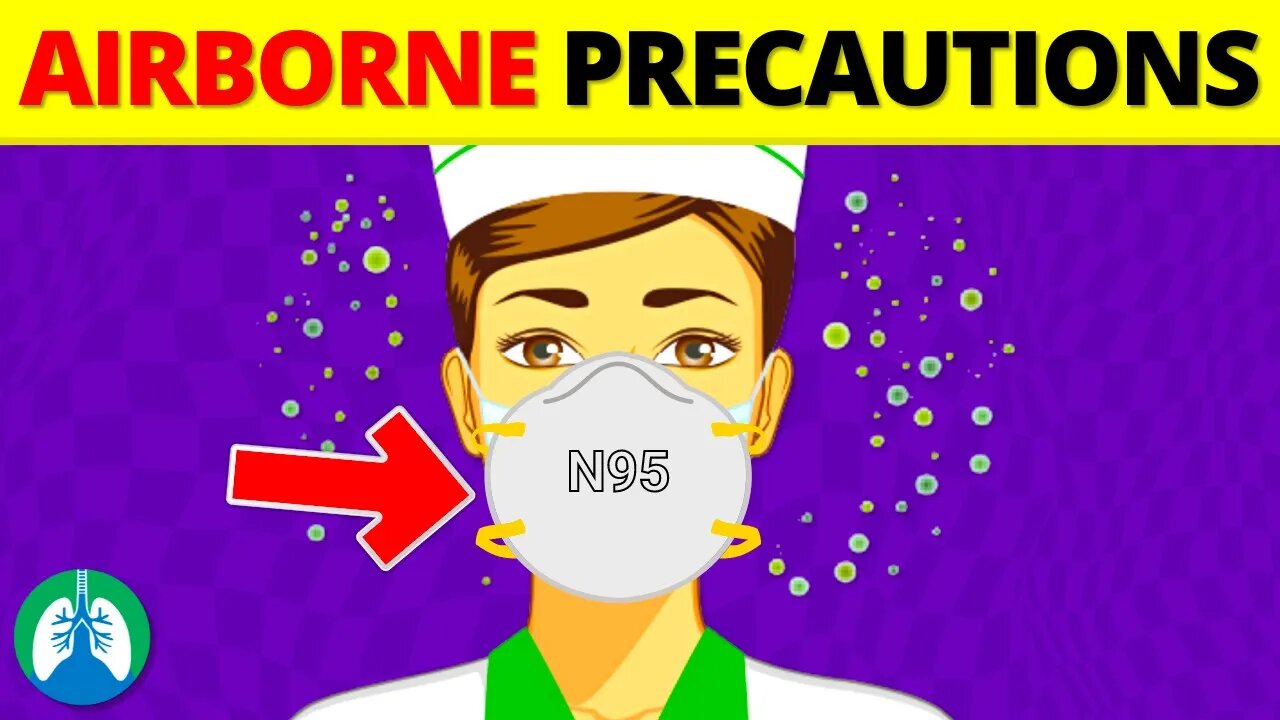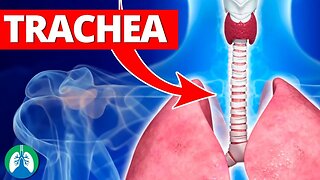Premium Only Content

Airborne Infection Isolation (Medical Definition) | Explainer Video
What is infection control? What is Airborne Infection Isolation? Watch this video for a brief overview of this topic and how to prevent the spread of infections.
💥Lung Infections [Full Guide] ➜ ➜ ➜ https://bit.ly/3fRYkEa
Transmission-based precautions are used in the hospital for patients with a known or suspected infection that requires control measures to prevent it from spreading.
➡️ The three primary types include:
- Contact precautions
- Droplet precautions
- Airborne infection isolation
Each type is classified according to the route of transmission for the disease. However, for this video, we are primarily focusing on airborne diseases that require high-level isolation techniques in the hospital setting.
➡️ Airborne Infection Isolation
Airborne infection isolation is used to protect patients and medical professionals from the spread of infectious diseases, such as:
- Tuberculosis
- Measles
- SARS
- Varicella
This type of infection control requires all personnel who enters the patient's room to wear an approved N-95 respirator (or higher). The respirator creates a tight seal around the mouth and nose. This helps prevent the inhalation of airborne organisms that are produced by infected patients when they talk, cough, or sneeze.
➡️ Implementation
- Place the patient in a private negative-pressure room
- The room must have 6–12 air changes per hour with high-efficiency filtration
- The patient must remain in the room with the door closed at all times
- Wash your hands before entering the room
- Wear an N-95 or higher respirator before entering the room
- Remove the respirator and wash your hands after leaving the room
- Susceptible personnel should not care for these patients if immune personnel is available
- Patient transport should only occur for essential purposes
- If transport is required, have the patient wear an appropriate respirator
- Use dedicated medical equipment for the patient (if possible)
- Properly clean and disinfect any equipment that cannot be dedicated to the infected patient
- Educate the patient and their family about airborne isolation
As previously mentioned, airborne precautions are important in preventing the spread of infectious diseases between patients and healthcare workers. Therefore, all medical personnel must be trained on the proper use of personal protective equipment (PPE). This includes when to put on and remove gloves, gowns, and masks (or respirators) before, during, or after each patient interaction. In addition, all medical staff must know how to properly clean, disinfect, and sterilize any equipment or surfaces that may have been contaminated by an isolated patient. It is important to remember that infection control precautions are not a substitute for good hand hygiene. Researchers estimated that 4% of all hospitalized patients in the United States develop a healthcare-associated infection (HAI). This refers to an infection that is acquired while receiving treatment for another condition in a healthcare setting. Many cases can be prevented with proper hand hygiene and infection control measures, such as airborne infection isolation.
💥Lung Infections [Full Guide] ➜ ➜ ➜ https://bit.ly/3fRYkEa
—————
📗 BEST STUDY GUIDES FOR YOU
▪ TMC Test Bank 👉 http://bit.ly/2IGeqSu
▪ Hacking the TMC Exam 👉 http://bit.ly/2XBc8do
▪ TMC Exam Bundle (Save $) 👉 https://bit.ly/34pqEsV
▪ Daily TMC Practice Questions 👉 http://bit.ly/2NnXh3C
💙MORE FROM RTZ
▪ Free TMC Practice Exam 👉 http://bit.ly/2XlwASL
▪ Free RRT Cheat Sheet 👉 http://bit.ly/2IbmOKB
▪ Resources for RT's 👉 http://bit.ly/2WVV5qo
▪ Testimonials 👉 http://bit.ly/2x7b5Gl
🌐FOLLOW US
▪ Instagram 👉 http://bit.ly/2FhF0jV
▪ Twitter 👉 http://bit.ly/2ZsS6T1
▪ Facebook 👉 http://bit.ly/2MSEejt
▪ Pinterest 👉 http://bit.ly/2ZwVLPw
🚑MEDICAL DISCLAIMER
This content is for educational and informational purposes only. It is not intended to be a substitute for professional medical advice, diagnosis, or treatment. Please consult with a physician with any questions that you may have regarding a medical condition. Never disregard professional medical advice or delay in seeking it because of something you watch in this video. We strive for 100% accuracy, but errors may occur, and medications, protocols, and treatment methods may change over time.
💡AFFILIATE DISCLAIMER
This description contains affiliate links. If you decide to purchase a product through one of them, we receive a small commission at no cost to you.
—————
⏰TIMESTAMPS
0:00 - Intro
0:39 - Transmission-based precautions
0:50 - Three Primary Types
1:12 - Airborne Infection Isolation
1:58 - Implementation
—————
🖼CREDIT FOR MUSIC AND GRAPHICS:
▪ Music licensed from Audiojungle.net/
▪ Graphics: Canva.com, Freevector.com, Vecteezy.com, and Pngtree.com
#RespiratoryTherapy #RespiratoryTherapist #InfectionControl
-
 3:21
3:21
Respiratory Therapy Zone
1 year agoTrachea (Medical Definition) | Quick Explainer Video
345 -
 18:36
18:36
Forrest Galante
3 hours agoI Found The Ocean’s Most Venomous Snake and This Happened…
17.9K6 -
 LIVE
LIVE
SpartakusLIVE
5 hours agoSpartakus Sunday SOLOS to end your weekend with UNCONTROLLABLE HYPE
508 watching -
 2:11:25
2:11:25
vivafrei
13 hours agoEp. 275: Maxwell's Plea Deal Argument! Rogue Judges! Nuclear War? Trans Lawsuits! Crypto AND MORE!
93.9K188 -
 LIVE
LIVE
Due Dissidence
12 hours agoTucker and Fuentes TRADE BLOWS in MAGA Civil War, Burr TRIGGERS Shapiro, Huckabee Visits GHF Site
1,492 watching -

GritsGG
9 hours agoWin Streaking All Day! Most Wins 3230+ 🧠
62.1K2 -
 3:53:43
3:53:43
Mally_Mouse
6 hours agoSpicy *Sunday*!! - Let's Play!
18K1 -
 2:57:30
2:57:30
megimu32
3 hours agoOFF THE SUBJECT: Rock Band Night! Let’s Shred & Hang!
12.3K2 -
 DVR
DVR
EricJohnPizzaArtist
5 days agoAwesome Sauce PIZZA ART LIVE Ep. #57: MYSTERY PIZZA NIGHT!
17K -
 2:57:17
2:57:17
Barry Cunningham
1 day agoMUST SEE: 10 REASONS WHY IT'S TIME FOR PRESIDENT TRUMP TO DROP THE HAMMER! ( AND MORE NEWS)
77.3K86